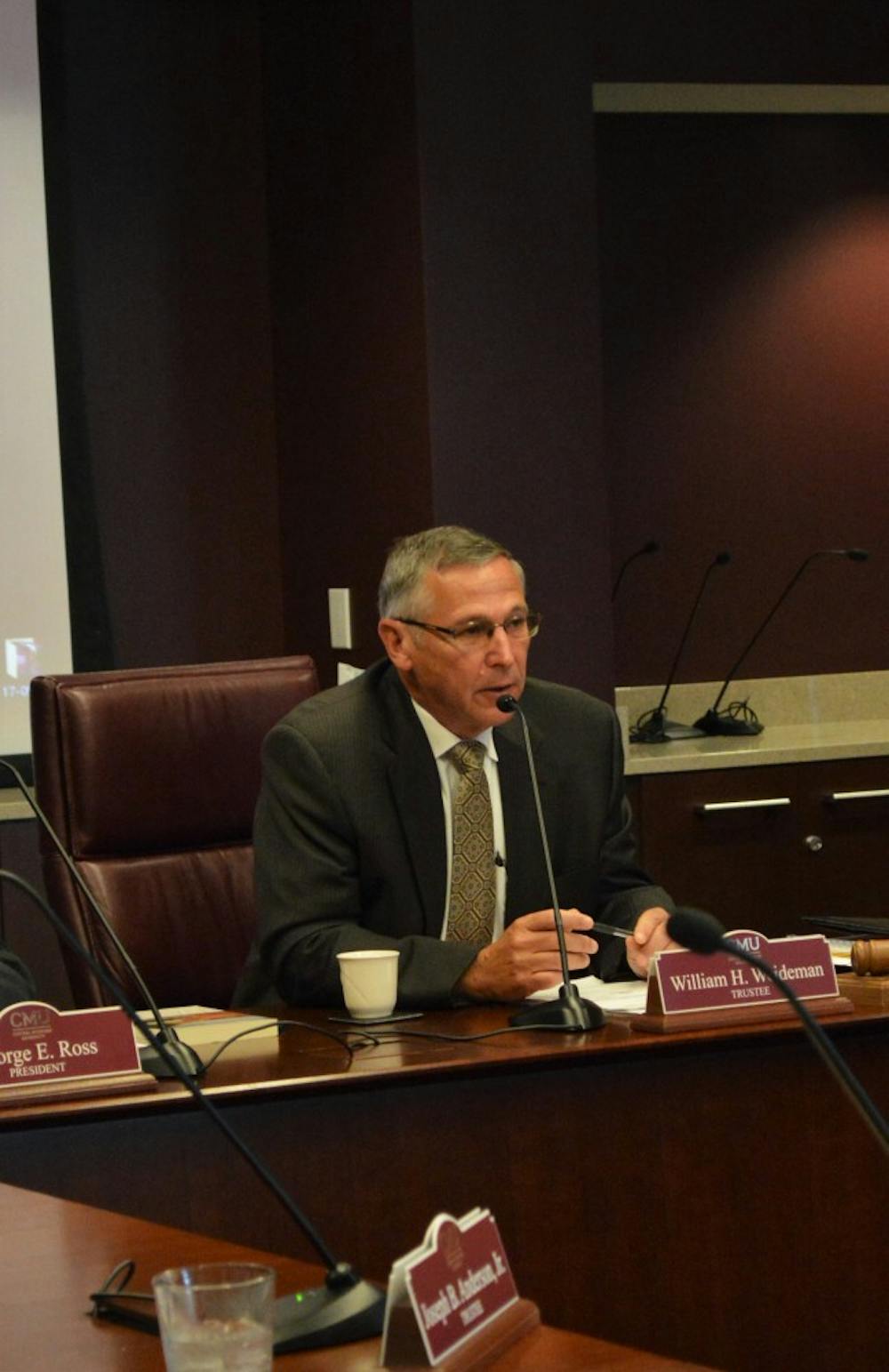Notebook: Board of Trustees sets target four-year graduation rate of 33 percent

Trustee William Weideman speaks to the board and audience at the Board of Trustees meeting on Sept. 21, 2017 at the Bovee UC.
The Central Michigan University Board of Trustees discussed reviewing the organizational structure of academic divisions, increasing the four-year graduation rate and inclusivity on campus at its formal meeting Sept. 21 in the President’s Conference Room at the Bovee University Center.
The trustees approved the consent agenda, which included a Michigan Council for Arts and Cultural Affairs funding request, the Plante Moran audit report for the 2016-17 fiscal year and approval for the target four-year graduation rate.
Four-year graduation rate
The board voted to approve a four-year graduation rate target of 33 percent in the 2017-22 Strategic Plan, meaning the goal is to reach a four-year graduation rate of 33 percent for first-time-in-any-college students by 2022.
CMU President George Ross said the university is moving in the right direction — with the four-year graduation rate increasing from 21.9 percent to 27.4 percent in the past year.
Tricia Keith, chair of the Academic and Student Affairs Committee, said part of the goal is to improve affordability for students.
“What research has shown is the longer students stay here, the more debt and other challenges they accumulate,” Keith said. “The idea is ensuring those who come here with a strong plan and a push to be able to graduate in four years, that we as a university are doing as much as we can to enable that.”
Academic structural reorganization
Keith also discussed the reevaluation of academic organizational structure. She said the planning and review will take place this year, with implementation taking place during the following academic year.
Three faculty members spoke during the public comment portion of the meeting, expressing concern the reorganization was added to the strategic plan without open discussion.
Mary Senter, the director of the Center for Applied Research and Rural Studies, said there were open discussions last year regarding the strategic plan, but a sentence about structural reorganization was added in June without faculty members being involved.
“You can say ‘this is a five-page plan – this is just one sentence. Why in the world are faculty going to be concerned about one sentence?’” Senter said. “What you have to understand is the way in which our departments and our colleges are organized really governs our careers and our day to day life. Adding that one sentence without any campus discussion, without any awareness among faculty, felt very disrespectful to faculty.”
Social work program director Susan Grettenberger and associate professor Michael Mamp also expressed concerns about transparency.
“Because this component was added at the end and there was no conversation about it, it feels a bit uncomfortable to people,” Mamp said. “Perhaps in the end the outcome will be fabulous and we will all be celebrating a year from now. However, I think there needs to be more conversation and opportunities to engage.”
In a follow up meeting with Central Michigan Life, Ross said the process will be open and transparent. The world has changed since CMU last looked at the organizational structure 20 years ago, he said, and they want to make sure the structure benefits students’ education.
Approval of strategy for this year
Trustees also approved university strategies for the year ending June 30, 2018, based on the 2017-22 strategic plan. The strategies included in the strategic plan will guide what administrators do this year, Ross said.
Prior to approving the strategy for this year, Ross discussed the previous year — noting the first class of physicians from CMU’s College of Medicine graduated in May and there was a small decline in first-year retention rate at CMU.
Diversity and inclusion efforts
Keith also discussed the third-party review done by the Barthwell Group to look at diversity and inclusion on CMU’s campus. The Equity and Inclusion Task Force previously made recommendations to Ross.
The president said he received six major recommendations about three weeks ago. Some “pretty significant” recommendations have come to him, Ross said, and he will work with his cabinet and inform the campus community as they move forward.
Inclusivity is a core value of the university, Ross said, adding it couldn’t be any more important.
“A diverse community makes a strong community,” he said.



